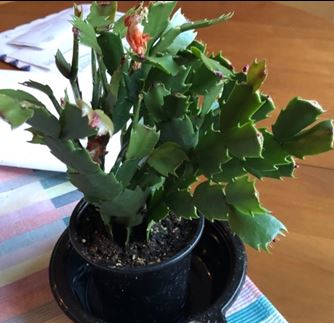Tales From the Help Desk : Christmas Cactus
Q. How do I care for a Christmas cactus so that it blooms well for Christmas?
A. Christmas cactus, Schlumbergera x buckleyi, is native to tropical rain forests. It should be planted in a soil mix that is high in organic material but drains well. It likes to be root bound, so don’t feel you have to keep putting it in a larger pot each year. Keep the soil moist from spring through summer but let the soil dry out between waterings from fall to spring. While it doesn’t want to have overly moist soil during this period, it does like humidity. You may want to mist the plant in the fall and early winter. This does seem contradictory to the guidance to let the soil dry out between waterings during this time, but indoor air typically has low humidity during the winter months.
Christmas cactus prefers filtered, indirect light in spring and summer but likes more light during winter. Fertilize monthly during the growing season between March and September. Use a 20- 20-20 or 10-10-10 plant food diluted with water to 50% strength. Note: Regular Miracle Grow does not have this ratio of nutrients. Better to use Miracle Grow for Indoor Plants, which does. You can also apply a magnesium sulfate (Epsom salt) solution monthly using a ratio of 1 teaspoon to 1 gallon of water, but don’t apply the same week that you add the plant food.
Ideal temperatures for the growing season, March – September, are 70-80°F, pretty much standard house temperatures. Starting in September, temperatures and light exposure need to be regulated to promote flower bud production.
Beginning in mid-September provide:
(a) bright daytime light
(b) nighttime temperatures between 55 and 65°F and
(c) long nights consisting of 13 hours of total darkness (i.e., cover plant with a black cloth or place plant in a totally dark room from 6 pm to 7 am each day for 6-8 weeks).
When buds form, you can stop the 13 hours of darkness regimen.
This article originally appeared in the March 2022 edition of The Colonial Master Gardener newsletter.

